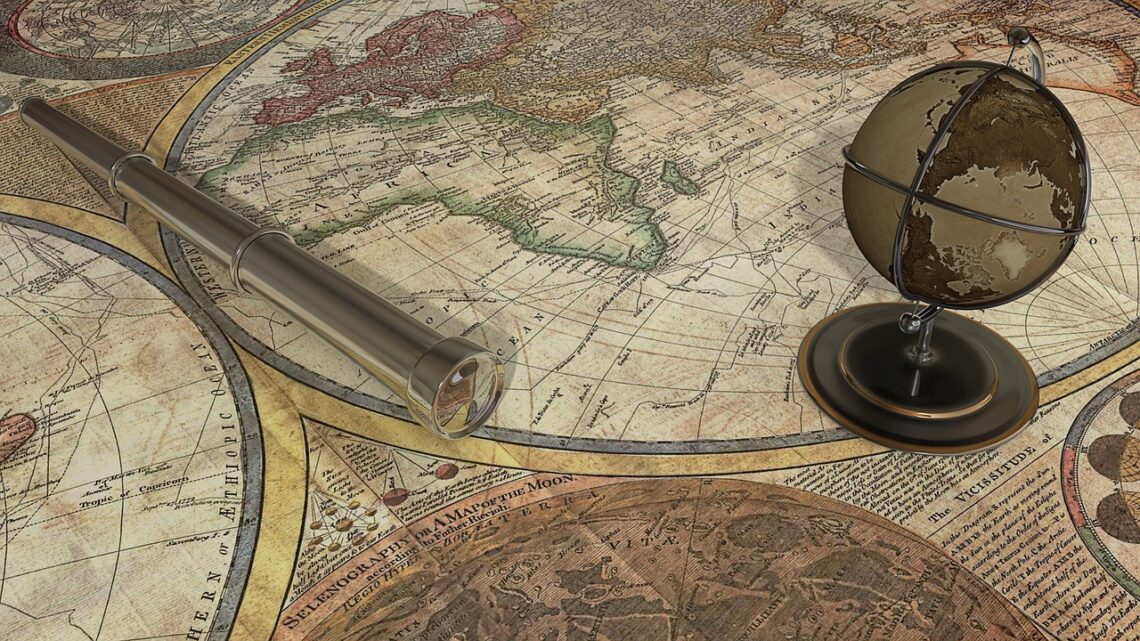
Wire Guided Localization Before Lumpectomy
Before my lumpectomy, I had a wire-guided localization performed by a radiologist. I didn’t know exactly what to expect when I went into the procedure. I’m going to share my patient experience with you so that you can better understand this procedure.
Note: This is my patient experience that I am sharing with you. This should not be considered medical advice. Please understand my disclaimer, and always follow the advice of your medical team.
I underwent a lumpectomy in Fall 2019 to remove a small area of DCIS and a benign fibroadenoma. In my pre-op appointment, my surgeon let me know that I would need to go to a radiology office before surgery to have the localization performed.
I had no idea what he was talking about! What was this process, and why would it need to be performed?
I took a moment to ask him about the process. He said that they would be placing wires in my breasts so that he would know where to go during surgery.
What?
This didn’t sound like fun at all!
Why do Surgeons Need Wires?
Not all breast cancers can be felt or seen by the eye. These cancers are only visible under breast imaging. For example, my DCIS was not yet at the stage where it had formed a lump. It was only visible under a mammogram.
If a lumpectomy is to be performed with accuracy, the surgeon needs to know exactly where to go. This is where the wires come in handy. When there is a wire, the surgeon knows exactly where to go.
Additionally, a wire may need to be placed on a palpable (able to be felt) lump to mark the correct area to be excised. This was the case for me. I had a few benign lumps, but only one was to be removed during the lumpectomy.
What is it Like to Get a Wire Placed?
If you are to have a wire-guided lumpectomy, the wires will be placed on the day of surgery. You will be given an arrival time to show up at the imaging center so that the process can get started.
I was called a few days ahead of my lumpectomy and given a time to show up at the women’s center. I had previously brought my imaging down to that location since it wasn’t in the same medical network as my original imaging.
I needed to have 2 wires placed because there were two different removal sites. One was the DCIS on my right and one was the benign lump on my left.
I was called into the back and got undressed and put on the pink radiology robe. The first localization was to be done under ultrasound.
I got called in and the tech had me lay down on the table. She started to ultrasound my left, and I noticed that she was moving around in a different location than I was expecting.
When I asked her she seemed confident in her location.
At this point, I needed to stop her. She was in the wrong place.
Patient Tip: Know Where The Right Place Is
I am so thankful that I had gone over the location with my surgeon of where the cancer and the benign lumps to be removed were. I knew exactly where the wires were supposed to go!
I was able to stop the tech and the radiologist from placing a wire in the wrong location. When I brought up the location to the radiologist, he gave me a strange look and said he would need to call my surgeon to verify. I had several benign lumps in my left breast, and while I was confident which one my surgeon wanted to remove, he wasn’t about to take my word for it.
Let me tell you, I was not happy to be lying on the table, with the tech, hungry, and waiting for the radiologist to hear back from my surgeon. I think I was on that table for at least half an hour!
Finally, the radiologist heard back from the surgeon and confirmed the location.
Please, make sure that you know where the correct locations are for your wire localization. I’m so thankful that I was able to advocate for myself and get the wire placed in the correct lump.
Let’s Get Numb
Before the wire is placed, the radiologist will make sure that you are numb. This procedure is done under local anesthesia. I wrote about getting numb in my biopsy post.
The radiologist will do an initial “pinch and burn”, then let your breast get completely numb. Once it is numb, the radiologist will then begin the process of placing a wire.
Where are We Going?
The radiologist will use the appropriate imaging tools to locate the area. I had two different localizations done, one under ultrasound and one under mammogram.
For the ultrasound, I was lying on the table, and the radiologist was able to use the ultrasound wand to find the fibroadenoma. He then inserted the wire, which was about the thickness of a fishing line, and really flexible. I didn’t feel pain during this, but what I did feel was pressure. Also, my lump moved around so he had to hold it still so he could stick the wire through it.
I felt like a fish on a hook. I’m glad that I was lying down for that process.
Once he was done with the placing of the wire, they gently flattened it and covered it with gauze so that it didn’t poke me, or get caught up in my radiology robe.
The next localization was done under a mammogram. I was really worried about passing out during that localization. So, I made sure that the nurses knew that I had issues during my mammogram guided biopsy.
I’m so glad that I told them about my challenges. The team made sure that I was comfortable. They had me sit down on a chair during the mammogram and had pillows available so that I was comfortable.
When it came time for the numbing, one of the nurses made sure to keep me talking so that I didn’t pass out. She was completely amazing. She got me talking about my kids and before I knew it, I was numb!
The radiologist used the mammogram to locate the area of my DCIS. This localization went much faster because the wire hooked into the biopsy clip that had already been placed. I didn’t feel anything as they were placing the wire.
After The Wires Are Placed
After the wires were placed, then they needed to take additional mammogram imaging of both of the wires. I would take these mammograms with me to the hospital and give them to my surgeon.
Once the mammograms were done, the nurse was able to get my wires comfortable taped and gauzed. I was able to put my shirt on and go out and see my husband.
The next step was to get checked into the hospital for my lumpectomy.
Other Localization Methods and a Video
There are other localization methods that I found out about after my lumpectomy. Some of these are placed on the day before surgery. These wire-free devices allow surgeons to mark the location to be removed without using a wire.
Other companies are working on ways to make this localization process easier for the surgeons and the patients.
I had the opportunity to discuss my wire-guided localization process on the Breast Practices Show. The host, Fazila Seeker, and another breast cancer patient, Miranda, and I had a great discussion about breast localization.
MOLLI Surgical has developed a wire-free localization method that eliminates the need for wires!
Below is a link to the show. I hope that you find it valuable.
Jennifer Douglas
Jennifer is the author of "A Breast Cancer Journey: Living it One Step at a Time," breast cancer survivor, and patient advocate. Her book, published in 2023 by Bold Story Press, is an encouraging guide for breast cancer patients. It contains first-hand information, organized by topics, to help readers navigate the diagnosis, treatment, and recovery from breast cancer. Her writing emphasizes emotional, mental, and physical well-being along with empowered decision-making.


You May Also Like

Reflections on a Memorable Book Signing at NCoBC 2024
April 26, 2024
25 Things I’d Tell Myself Before My Lumpectomy
October 26, 2021

Thank you for sharing, very informative.
I’m so glad that you found it informative. It was a new procedure for me, and I think that others would benefit from knowing what to expect!
My MRI-guided biopsy was extremely painful and traumatic, so I’m more than a little terrified of my upcoming wire localization to remove some sclerosing lesions and LCIS. Would you say this procedure was equally unpleasant to the biopsy, or am I losing sleep for nothing?
I’m so sorry to hear that your MRI guided biopsy was so terrible. I found the wire guided process to be easier than the biopsies, especially the wire went into my biopsy clip locator. I didn’t enjoy it, but it was faster than the biopsies because they weren’t collecting samples. Hope it goes smoothly for you!
Just found your blog today… thank you for sharing all the juicy details. I just went thru lumpectomy last week for Stage 0 DCIS. The surgeon called them brackets and I thought I knew what was about to happen, but oh my…. fish on a hook is a great description. I had 4 wires and it took forever, with the radiologist and mammo tech pushing and shoving all over. It was like the game Battleground…. A 4, no A 5. B22 no B 25. these needles are too small… let me get a longer one. And pushing me to get… Read more »
Glad you resonated with my descriptions! I can’t imagine having 4 wires! That’s a lot! Hope that your results appointment goes well and that your recovery is progressing smoothly. Best wishes throughout this part of the process.
Thanks for sharing, I’m having this done in 7 days and with no info from medical staff , I’m incredible nervous ( having nightmares). This article helped me understand the process.
Hi Jennifer, I’m so glad you are sharing this. So many women are not told what they have to go through to have the Wire Localization done. My mother had this done at Kaiser and they did NOT give her any local anesthetic in Radiology. The radiologist said they were sorry but there was no other option. I believe this is standard practice with all Kaisers, at least in the Bay Area and Sacramento region. I think this is barbaric – and the woman is so vulnerable at this stage right before they take her into pre-op. I understand that… Read more »
Sandi, I am absolutely appalled that localization would be done without local anesthetic. I cannot imagine this being appropriate. So dreadful. I’m so sorry your mom endured that and I do hope that the feedback to the medical team was given. I’m so sorry that was her experience. That should NOT have happened.